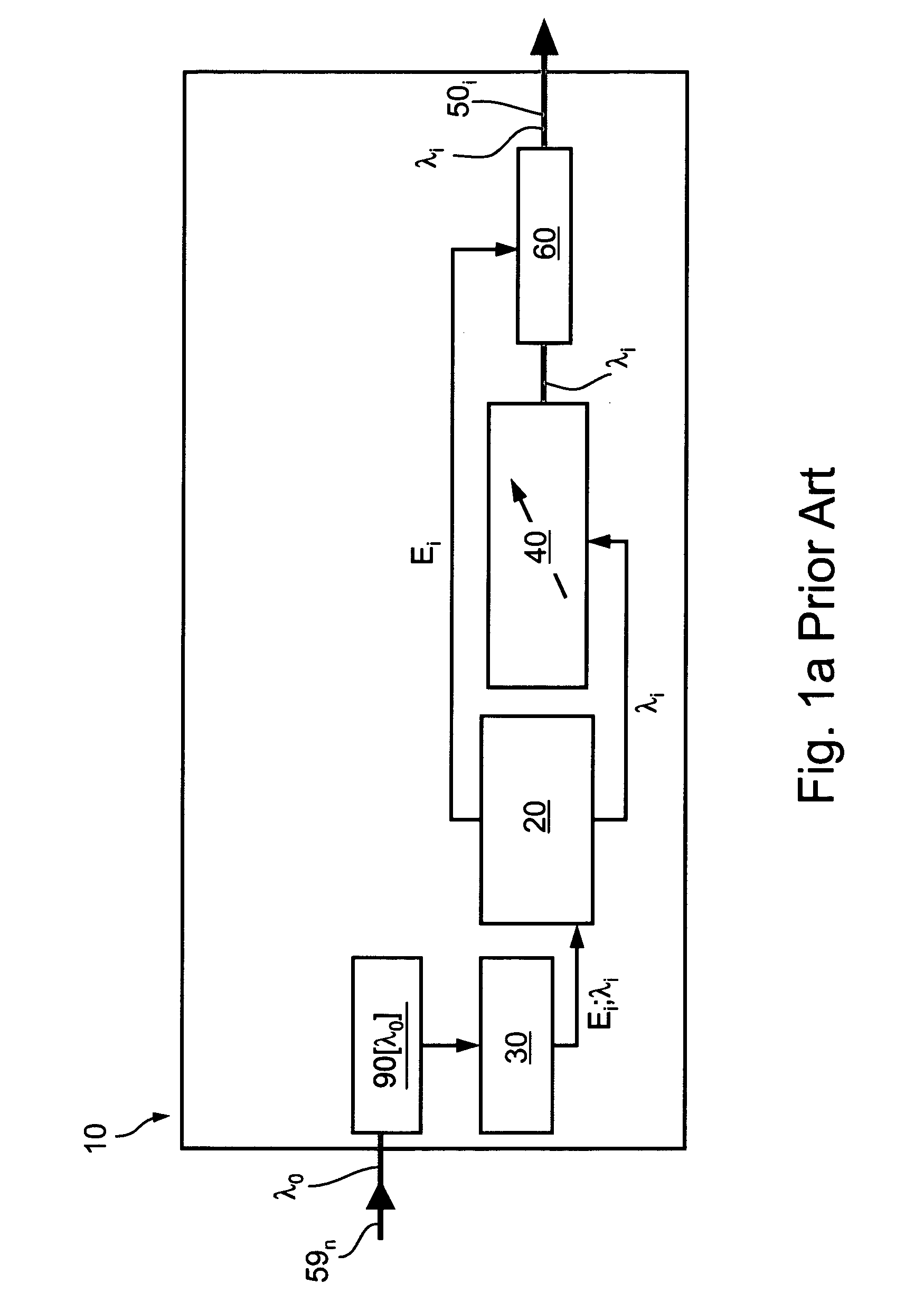Laser power grid
a technology of laser power grid and laser power grid, applied in multiplex communication, optical elements, instruments, etc., can solve the problems of inefficient, complex and costly electronic circuitry, and constant increase in communication traffic, so as to achieve faster and cheaper, reduce waste heat, and cost-effective
- Summary
- Abstract
- Description
- Claims
- Application Information
AI Technical Summary
Benefits of technology
Problems solved by technology
Method used
Image
Examples
Embodiment Construction
[0112] The present invention is of a laser power grid, for operation with data networks, employing wDM multiplexing, and incorporating wavelength addressing. Specifically, the laser power grid includes a laser power supply station, comprising a plurality of continuous-work laser sources; a laser distribution grid, formed as an optical fiber, or as a plurality of optical fibers, for distributing light propagations of different wavelengths throughout a data network, to supply it with laser power; and an optical switching network, coupled to the laser distribution grid, for turning the laser power on, locally, where it is needed. The laser power grid replaces systems of tunable lasers in known data networks; it is considerably faster and cheaper than systems of tunable lasers and produces less waste heat within the data network surroundings. The laser power grid incorporates parallel fast optical communication in complex multi-node communication and computer networks and enables the im...
PUM
 Login to View More
Login to View More Abstract
Description
Claims
Application Information
 Login to View More
Login to View More - R&D
- Intellectual Property
- Life Sciences
- Materials
- Tech Scout
- Unparalleled Data Quality
- Higher Quality Content
- 60% Fewer Hallucinations
Browse by: Latest US Patents, China's latest patents, Technical Efficacy Thesaurus, Application Domain, Technology Topic, Popular Technical Reports.
© 2025 PatSnap. All rights reserved.Legal|Privacy policy|Modern Slavery Act Transparency Statement|Sitemap|About US| Contact US: help@patsnap.com



